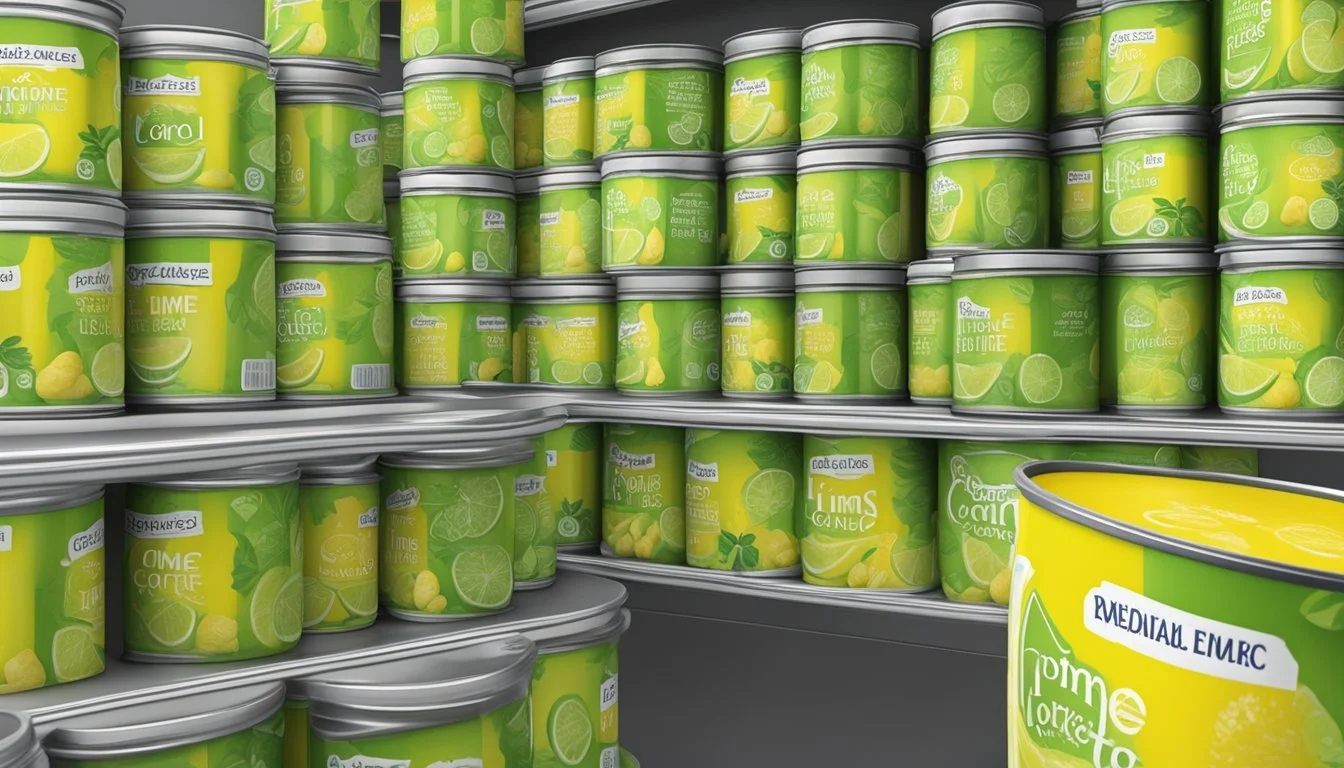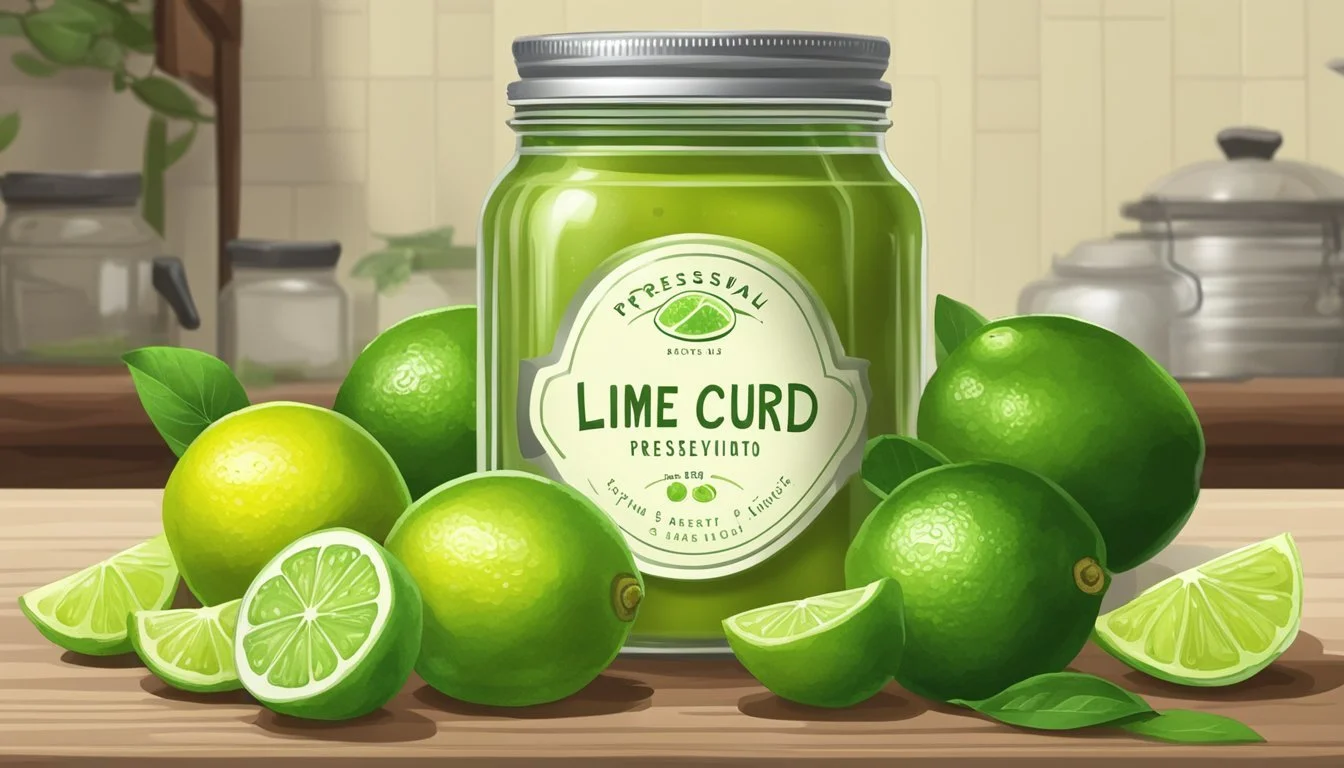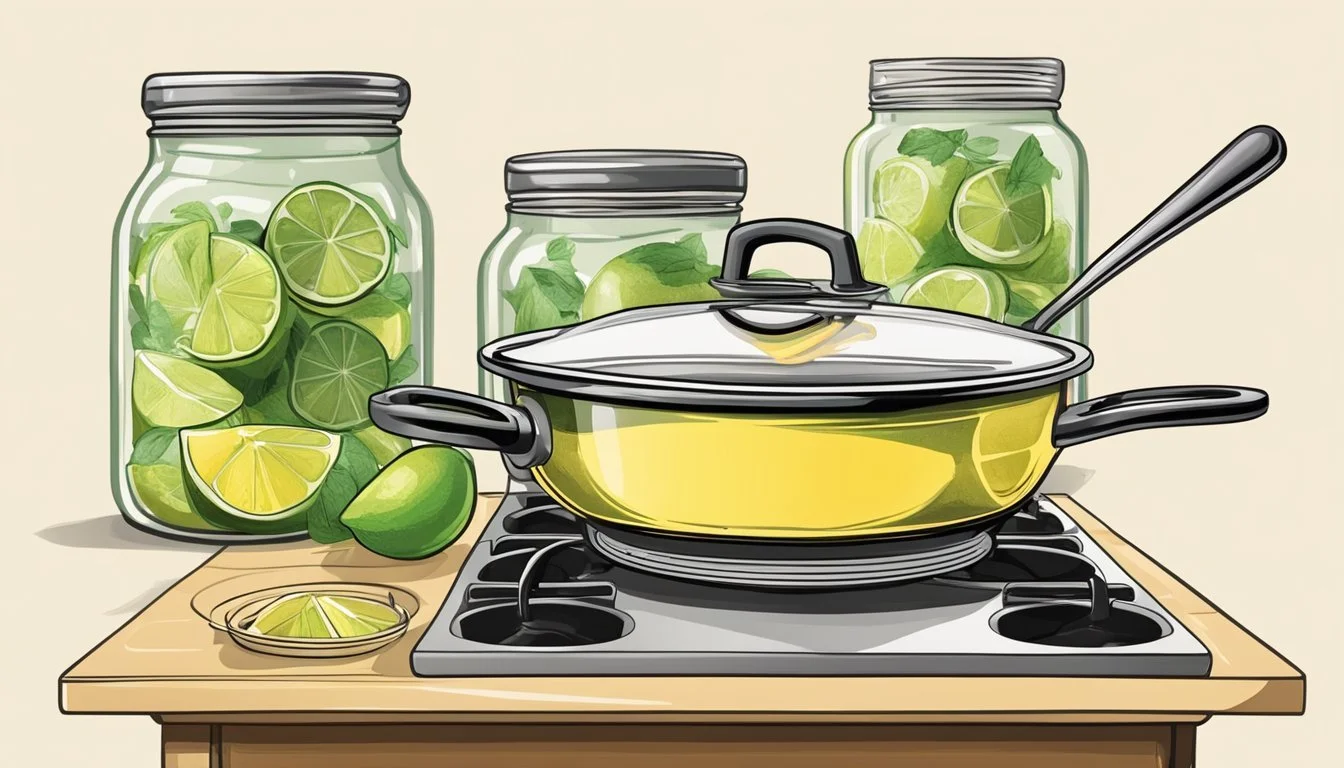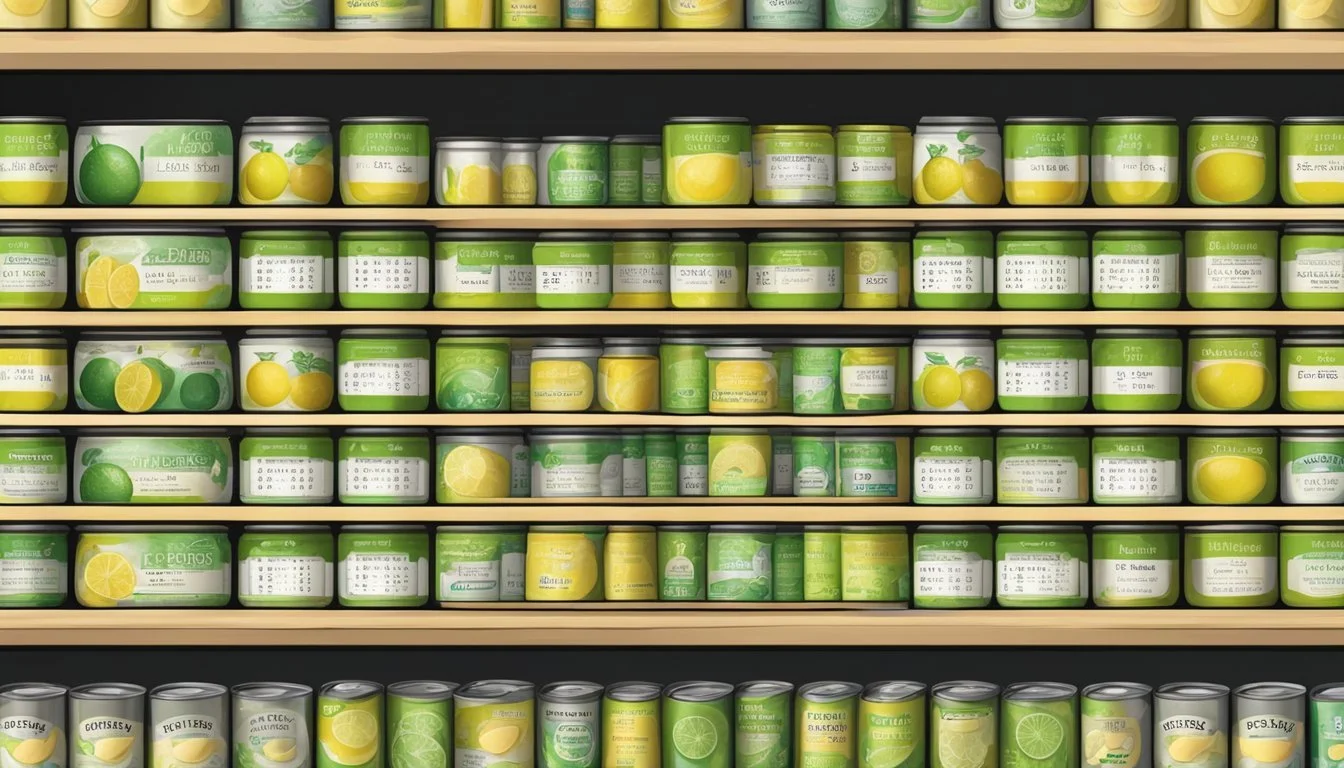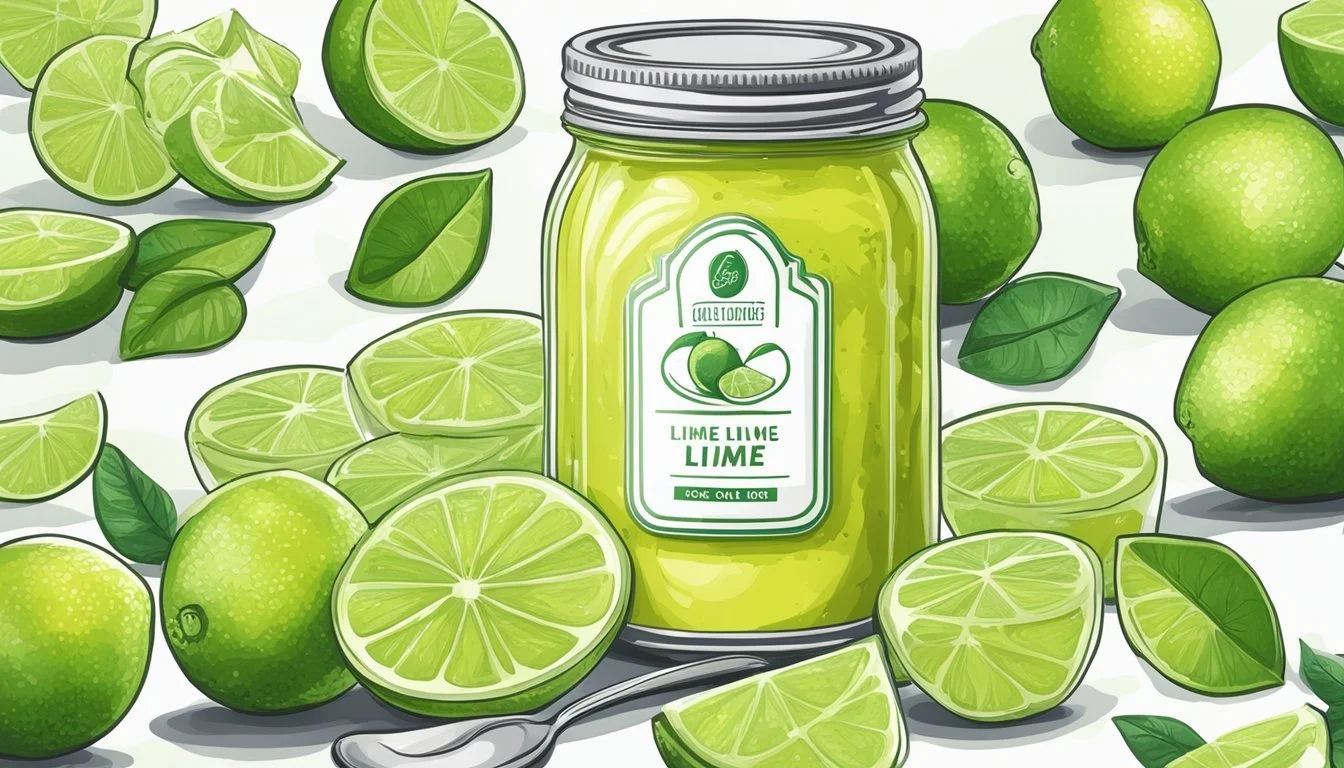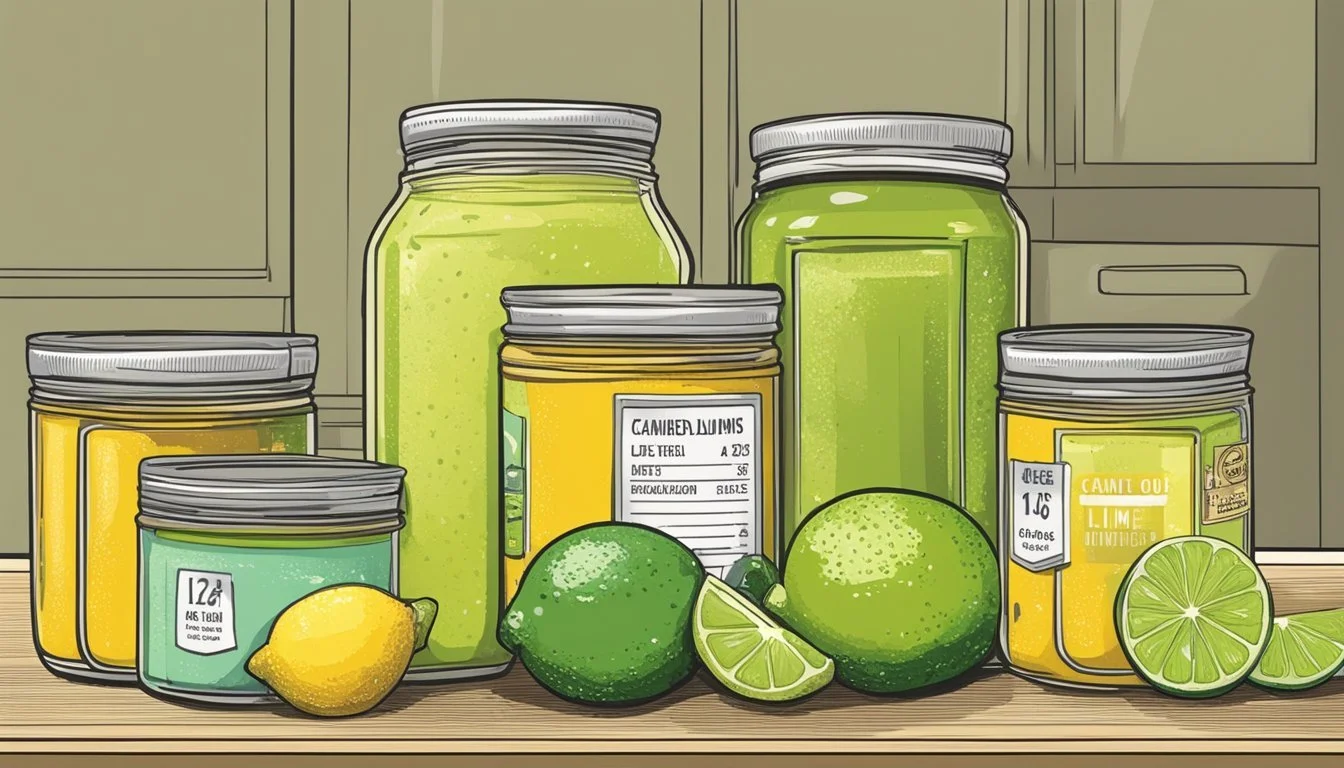How Long Does Canned Lime Curd Last?
Unveiling Shelf Life and Storage Tips
Canned lime curd is a delightful preserve, offering a zesty flavor that can enhance many desserts and pastries. While it carries the same tangy and refreshing taste as its cousin, lemon curd, lime curd tends to be a bit more aromatic with a tropical twist. These curds are made from a combination of citrus juice, zest, sugar, butter, and eggs, cooked together until thick and creamy. Once prepared, they can be canned to extend their shelf life.
However, unlike many other home-canned goods, lime and lemon curds have a significantly shorter shelf life. This is largely due to the presence of butter and eggs in their recipes, which are less stable over time compared to fruit jams and jellies made strictly from sugar and fruit. The National Center for Home Food Preservation advises that for best quality, canned lemon or lime curd should be consumed within 3 to 4 months of canning. They should be stored in a cool, dark place, away from light to preserve their quality.
This recommended timeframe for consumption ensures that not only the taste but also the texture remains desirable. While the curd may remain safe to eat beyond this period, the quality may diminish. Therefore, when planning to can lime curd, it is beneficial to prepare quantities that align with this expected shelf life, ensuring that every spoonful of this citrusy spread maintains its delectable integrity.
Essentials of Canning Lime Curd
When preserving lime curd, understanding acidity and the correct canning process are two pillars that ensure safety and longevity. Specific pH levels and proper sealing techniques are pivotal for a successful outcome.
Understanding Acidity and pH Levels
Acidity is crucial in the preservation of lime curd. Lime juice, much like lemon juice, is high in citric acid, which gives it a low pH necessary for safe canning. The target pH should be at or below 4.6 to inhibit bacterial growth, especially botulism spores. As such, the addition of bottled lemon juice may be recommended to ensure consistent acidity.
The Canning Process and Techniques
The canning process involves carefully sterilizing jars and properly sealing them to preserve lime curd. Here are the basic steps:
Prepare the canning jars by washing them in warm, soapy water. Rinse thoroughly and keep them hot until ready to fill.
Seal the jars with lids prepared according to the manufacturer's directions.
Process the jars in a water bath canner, which involves filling the canner with enough water to cover the jars by 1 to 2 inches. The water should be preheated to 180°F before placing the jars inside.
Slowly bring the temperature up to a full boil, ensuring jars are covered by water, and then start the processing time.
A thermometer ensures the correct temperature is reached and maintained throughout. Consistency in processing time is key to achieving a proper seal and ensuring the longevity of the canned lime curd.
Ingredients For Lime Curd
When crafting lime curd, the selection of high-quality ingredients is pivotal, and understanding the role each component plays ensures a successful outcome. The combination typically includes eggs, sugar, lime juice, zest, and butter.
Selecting Quality Ingredients
Eggs: Fresh, preferably organic, egg yolks are essential for richness and texture.
Sugar: Granulated sugar balances the tartness and aids in preservation.
Citrus: Fresh lime juice and zest impart the characteristic sharp flavor. Quality limes should be firm and heavy with bright skin.
Butter: Unsalted butter contributes to the smoothness and sets the curd.
It is crucial to use the freshest ingredients available for the best flavor and consistency.
Role of Each Ingredient in Lime Curd
Egg Yolks: Thicken the curd and provide a creamy texture.
Sugar: Sweetens the mixture and interacts with the eggs for proper setting.
Lime Juice and Zest: The juice adds tartness and liquid content, while the zest offers intense citrus aroma.
Butter: Melted butter creates a silky texture and enriches the curd’s flavor.
Each ingredient is integral to the final quality of the lime curd, with their proportions carefully balanced to achieve the ideal taste and texture.
Preparation Before Canning
During the canning process, meticulous preparation is crucial to ensure a safe and quality product. It involves creating a precise recipe and sterilizing equipment before the canning begins.
Creating the Recipe
One begins by assembling the ingredients for lemon or lime curd, which typically include fresh lemon or lime juice, zest, sugar, butter, and eggs. The recipe must be followed accurately to ensure safety and quality. The juice and zest should be extracted with care—using a citrus juicer for the lemon juice and a fine grater or zester for the zest. The sugar should then be measured and mixed with the zest to incorporate the oils, using a food processor if necessary for fine mixing.
Using a double boiler, the ingredients are gently cooked while one consistently whisks, preventing the eggs from scrambling and ensuring a smooth texture for the curd. A thermometer is indispensable for monitoring the curd’s temperature.
Sterilizing Equipment
Sterilizing the canning jars is an essential step to eliminate any contaminants that might spoil the curd or cause food safety issues. One should thoroughly wash the jars in warm, soapy water before rinsing. Then, the jars should be placed in a boiling water canner or a large pot, covered with water, and boiled for at least 10 minutes to sterilize.
Instruments required for the sterilization process:
Boiling water canner or large pot
Tongs to handle hot jars
Clean cloths for wiping jars
Headspace – a gap between the product and the jar's lid – must be precisely measured, typically leaving 1/2 inch to allow for expansion. Once the mixture and jars are prepared, the lemon or lime curd can be poured into the jars using a ladle and a canning funnel to minimize mess and ensure proper headspace. A non-metallic spatula may be used to remove air bubbles before wiping the jar rims with a clean cloth and securing the lids.
Canning Lime Curd
Canning lime curd involves precise steps to ensure a proper seal and preservation. By following the proper filling and sealing techniques and using the boiling water canning method, one can achieve a homemade preserve that is both delicious and has a reliable shelf life.
Filling and Sealing Jars
For canning lime curd, one must first prepare half-pint jars thoroughly, washing them in warm, soapy water. After rinsing well, the jars should be kept hot until they are ready to be filled. This preparation is crucial for eliminating contaminants that could spoil the curd. Lids and bands should be prepared according to the manufacturer's directions to ensure a secure seal.
With a ladle or a funnel, the lime curd should be poured into the jars, leaving a 1/2 inch of headspace which is essential for the expansion of the curd during the canning process. After wiping the rims, the canner places the lids on the jars and screws the bands on until they are finger-tight.
Boiling Water Canning Method
The canner should fill a boiling water canner with sufficient water to cover the jars by 1 to 2 inches, ensuring that the jars are positioned on the rack correctly to prevent contact with the direct heat at the bottom. Using a thermometer, the water should be preheated to 180°F before placing the jars inside. The jars must then be processed for a set time recommended by resources such as the National Center for Home Food Preservation, usually involving bringing the water to a full rolling boil and then processing for a certain duration of time.
When the process time is complete, the canner should remove the jars carefully and let them cool without any disturbance to allow the seals to form adequately. Good practice is to store the preserved lime curd in a cool, dark place to maximize its shelf life.
Safety and Storage
The longevity and safety of canned lime curd depend closely on how it is stored and the detection of any signs of spoilage. Proper storage can extend shelf life, whereas recognizing spoilage is critical for food safety.
Proper Storage Practices
When it comes to storing canned lime curd, maintaining a cool, dark environment is key. After canning, the lime curd should be kept away from light because exposure can deteriorate quality and flavor. Here are some specifics:
Refrigerator: After opening, it's imperative to refrigerate the lime curd and use it within a short time.
Freezer: Freezing is not typically recommended for canned citrus curds, as they contain butter and eggs which may separate when thawed.
Pantry Storage: Unopened canned lemon or lime curd should be stored in a pantry at room temperature out of direct sunlight.
Shelf Life: Optimal shelf life in proper storage conditions is typically 3 to 4 months for quality concerns, beyond which the quality may decline.
Storage Location Condition Shelf Life Pantry Cool, dark place, unopened 3-4 months Refrigerator After opening Consume promptly
Signs of Spoilage and Safety Precautions
Safety is paramount when it comes to home-canned goods, including lime curd. Below are signs and precautions to keep in mind:
Darkening: A change in color, such as darkening of the lime curd, can be a sign of spoilage.
Citrus Juice Freshness: The freshness of the citrus juice used can affect the final product's shelf life.
Jars and Seals: Always check jars for a secure seal and no damage before storing; if a seal is broken, discard the curd.
Spoilage Indicators: Any signs of mold, off-odors, or unusual textures are indicators that the curd should not be consumed. If in doubt, it is best to err on the side of caution and dispose of the product.
Remember, food safety is crucial, and when any uncertainty arises regarding the integrity of the canned lime curd, it is safer to discard the item than to risk consuming spoiled food.
Shelf Life and Preservation
When considering the storage of homemade lime curd, understanding its shelf life and how to prolong it is essential for both safety and quality.
Time Frame for Consumption
Homemade lime curd has a relatively short shelf life. It is important to consume it within 1 week when stored in the refrigerator due to the presence of highly perishable ingredients such as egg whites and yolks. If canned and processed correctly, lime curd can become shelf-stable and maintain quality for 3 to 4 months. However, the USDA suggests that for optimal quality, home-preserved foods should be consumed within one year.
Extending the Shelf Life of Lime Curd
To ensure the shelf life of lime curd is extended to its maximum potential, one must follow strict canning guidelines. Keeping jars in a cool, dark place can help maintain quality. The altitude at which canning takes place may affect processing times, so adjustments should be made according to USDA guidelines to avoid spoilage. Lime curd should not be exposed to temperature fluctuations as it can impact its shelf-stable nature. Refrigeration after opening is imperative.
Uses for Canned Lime Curd
Canned lime curd is a versatile ingredient that can enhance a variety of dishes, from sweet desserts to thoughtful gifts. Its bright flavor lends itself to numerous applications in the kitchen.
Dessert Applications
Utilizing lime curd in desserts is an excellent way to add a zesty twist to traditional recipes. Here are specific ways one can incorporate lime curd into sweet treats:
Pies and Tarts: Fill a pre-baked tart crust with lime curd and top with fresh fruit or whipped cream.
Cakes: Layer cakes with lime curd as a tangy filling or mix it into frosting for extra flavor.
Cookies: Sandwich cookies with a dollop of lime curd or incorporate it into cookie dough for a citrusy surprise.
Ice Cream: Swirl lime curd into ice cream before freezing, or use it as a topping.
Yogurt Parfaits: Layer yogurt with lime curd and granola for a refreshing breakfast or dessert.
Scones: Serve scones with lime curd instead of jam for a unique twist.
Gingersnaps: Pair lime curd with gingersnaps for a perfect combination of spicy and citrus flavors.
Gifting and Creative Uses
Canned lime curd is not just for the kitchen; it also makes a delightful gift and has other creative uses.
Gifts: Present beautifully decorated jars of lime curd as thoughtful homemade gifts.
Recipe Inclusions: Include a recipe card for a simple dessert or breakfast item with the gifted lime curd.
Dessert Bars: Set up a dessert bar with lime curd alongside other toppings allowing guests to customize their desserts.
Culinary Decor: Use lime curd as a vibrant garnish on plates for an elegant touch.
Troubleshooting Canning Issues
Maintaining the quality of canned lime curd hinges upon recognizing and rectifying common canning issues. By understanding the root causes of these problems, one can ensure both the safety and taste of their preserves.
Understanding Common Problems
Sealing Problems: A proper seal is critical to preserve the quality and safety of canned lime curd. Common issues that prevent jars from sealing include:
Nicks or cracks in the jar rim
Residue on the jar rim from lemons or lime curd
Overfilled jars preventing proper closure
Quality Degradation: Factors affecting the taste and texture of lime curd over time:
Storage: Lime curd should be stored in cool, dark places to maintain quality.
Lifespan: While canned goods generally last a year, lime curd is best used within 3 to 4 months.
Addressing Seal and Texture Issues
Seal Fixes: When jars do not seal properly, follow these steps:
Check the jar rim for nicks or food residue.
Ensure the canning process undergoes a full boiling water canning cycle.
If a seal fails, one should refrigerate the unsealed jars immediately and consume the contents promptly.
Texture Solutions: To retain the desired consistency and texture of lime curd, one should:
Use a zester rather than a grater for a finer zest to prevent a gritty texture.
Use a kitchen thermometer to ensure the curd does not overcook, which can alter the desired creamy texture.
Advanced Canning Tips
Canning lime curd effectively requires paying attention to specific details that affect the preservation quality. Following advanced canning tips can ensure a longer shelf life while maintaining the desired sweetness and texture.
Adjustments for Elevation
When canning lime curd, adjustments for altitude are crucial because boiling points change with elevation. The National Center for Home Food Preservation provides guidance for these adjustments:
At altitudes below 1,000 feet, process half-pint jars of lime curd for 15 minutes in a boiling water canner.
For altitudes above 1,000 feet, increase processing time:
1,001 - 3,000 feet: Add 5 minutes
3,001 - 6,000 feet: Add 10 minutes
6,001 - 8,000 feet: Add 15 minutes
8,001 - 10,000 feet: Add 20 minutes
Preventing Curdling and Separation
Curdling and separation can compromise the texture and appearance of your canned lime curd. To prevent this:
Ensure ingredients are well blended before heating.
Heat the mixture gently and gradually; do not rush the process.
Maintain a consistent temperature avoiding sudden spikes which can cause curdling.
Stir the curd continuously while cooking to prevent separation and promote even sweetness distribution.
University of Georgia experts recommend a thermometer to monitor the curd’s temperature closely. Cooking the mixture too fast or at temperatures that are too high can cause curdling, which will affect not just the appearance but also the intricate balance of sweetness and tartness in your lemon or lime curd.
Conclusion
Canned lime curd offers a delightful blend of preservation and flavor. When stored properly, canned lime curd generally maintains its quality for about 3 to 4 months. Although the curd may remain safe to consume for up to a year, some darkening in color may occur over time, which can indicate a natural change in freshness.
To maximize the shelf life and enjoyment of lime curd, it should be kept in a cool, dark place before opening. Once opened, it’s crucial to store the curd in the refrigerator and use it within one week to ensure the taste remains fresh.
Canning is an effective preservation method, contributing to lime curd's lasting freshness. When opting for home canning, adhering to proper canning guidelines is essential to guarantee food safety.
For optimal preservation:
Store unopened canned curd in a cool, dark place.
Refrigerate after opening and consume within one week.
In summary, whether one preferences lemon or lime curd, the approach to storage and the attention to use-by dates are pivotal. Enjoying the curd at its best quality depends on following these simple yet effective storage techniques.

